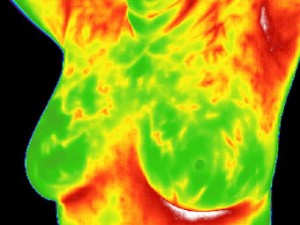See the award-winning documentary this Friday, June 7.
Krop BioResonance Studio
A division of Ecohealth & Wellness: The life-changing magic of healing your energy
Category: Informative (page 2 of 3)
What makes us feel sick and tired? What helps us feel better?
There are many, often complex, reasons behind ill health – but we don’t always have to look for the most complex solutions. If you watch out for these 3 hazards you’ll be putting yourself and your family to get on the path to better health!
Hazard 1: Scented household, laundry, air-freshening and body-care products
Opt for scent-free products as the chemicals used in scented products are often carcinogenic and can cause headaches, foggy concentration, and respiratory distress.
Hazard 2: Newly purchased furniture, bedding, carpets, clothing & plastic toys
These items can give off a ‘new’ item smell that is laden with toxins and chemicals. Always wash and air-out new items. These chemical smells can cause flu-like symptoms.
Hazard 3: Mold
Mold growth in damp basements, behind wallpaper, under carpets or in the bathroom needs to be removed from the home. Mold can impact the respiratory and nervous system and can even affect your mood.
Home is where you relax. By avoiding these hidden home health hazards you lay a foundation for good health for you and your family.
This is one of the easiest and most effective ways to improve your family’s health!
Getting Healthy for the Fall!
Vacation season is quickly coming to a close and everyone is getting ready to get back to their regularly scheduled routines. Whether it’s back to school for the kids and teens or back to work for you, now is a great time to make sure you’re at optimal health for the coming fall season.
Increasing your fresh and whole food intake by adding more fruit, vegetables and whole grains to your daily meals and eating high quality lean protein such as organic chicken, wild caught salmon and legumes will provide you and your family with the basic building blocks to great health. Nutritional supplements of essential vitamins and minerals as well as herbal medicines can go a long way in improving your overall wellbeing and energy while helping to lend support to the immune system in time for a busy fall season.
If you are looking to avoid illness this cold and flu season, speak to a Naturopath about safe and effective nutrient, herbal and homeopathic alternatives to conventional cold and flu treatment.
No matter what your health needs are, the time to start is NOW! Being mindful of your health now will reduce illness during school and work while improving performance and productivity throughout the year.
 Hyperactivity, Tantrums, Learning issues …is there a link to environmental exposures?
Hyperactivity, Tantrums, Learning issues …is there a link to environmental exposures?
Kids should live being happy and playful. But sometimes acting-out behaviours seem to take over leaving little ones feeling upset and their adult care-givers feeling frustrated. Some of these include:
-lack of concentration -fatigue -hyperactivity
-short attention span -irritability -depression
-respiratory difficulties -digestive difficulties -muscle aches and pains
-headaches -urinary problems -anger, aggression
In some cases, when the child can’t be comforted, regular medical attention doesn’t seem to alleviate symptoms, or regular discipline guidelines don’t seem to work – the underlying reason can be exposure to environmental stressors.
Try to notice – does your child’s behavior change when they are exposed to:
At home:
Perfumes, tobacco smoke, scented laundry products, scented hair products and deodorant, room deodorizers like Febreeze, chlorine and other cleaners?
Sometimes these reactions can even be the result of food allergies and sensitivities
New additions:
New paint, new carpeting, new furniture, new rubber/plastic/vinyl toys, new unwashed clothing?
At school:
Fruit-scentet markers, liquid paper white-out, recently waxed school gym floors, newsprint, photocopy toner, perfumes?
The chemicals in these items have been found to cause behavioural responses. You child’s acting-out might have simple, cost-effective solution: eliminating exposure to problematic materials.
EcoHealth offers a comprehensive environmental assessment and treatment plan, educational classes on how to support a lifestyle that doesn’t trigger these reactions, and materials regarding alternative products you can use, as well as personal support in individual areas of need for the child and family.
What do the following have in common: vehicle headlights, a baby bottle, a microwavable plastic food container and a DVD? Would you believe synthetic estrogen?
In the 1930’s, scientists experimented with a chemical compound in the hopes of using it in hormone therapy. A few years later it was discovered that this particular compound, when combined with others, created a multi-purpose plastic that was clear, durable and lightweight, with high heat resistance. Decades later, manufacturers continued to use this plastic in a wide variety of items- from bullet-proof security panels, shatter-proof headlights, light weight polycarbonate eyeglass lenses, sports equipment and electronic equipment, to name a few.
This “useful” chemical, called Bisphenol A (BPA), also found its way into the food chain through its use in the manufacturing of lightweight reusable water bottles, clear hard plastic microwavable food containers, baby bottles, epoxy resins used to line cans used for food and beverages as well as dental sealants.
BPA is leached into food and drink when the container is heated- through daily use (i.e. microwave use) or manufacturing procedures; when it is used to hold hot foods and beverages or cleaned with harsh and abrasive materials. The food or beverage contained is then consumed and BPA has now been inadvertently added to your diet. It is also detected in breast milk.
Human and animal studies since the 1990’s have associated BPA exposure to infertility, Type II diabetes and cardiovascular disease. Studies conducted in 2010 showed decreased sperm quality in men and poor egg quality in women associated with levels of BPA found in the body. It has been shown to be a harmful endocrine disruptor, even in small doses. It mimics the effect of the hormone estrogen (surprised?) and can act as an anti-androgenic. Concerns over its unknown effect on young children and developing fetuses have been expressed.
In 2008 Canada banned the use and import of polycarbonate baby bottles containing BPA. With increased consumer awareness, many retail stores have pulled much of their BPA-containing merchandise off shelves and several companies have ceased to make products containing BPA. In 2010, BPA was added to Environment Canada’s list of toxic substances.
Although the use of BPA has declined, it is still present in our environment. The best way to reduce exposure to BPA and other chemicals is to avoid the use of plastic containers to heat and store food.
Replace plastic food containers with glass containers and bottles.
Ensure that cans containing food, beverages and infant formulas are BPA-free.
Replace old plastic baby bottles with glass bottles.
Old plastic infant and children’s toys should be replaced with toys made from safer materials.
Discard food containers if they are made of clear, hard plastic
Watch out for items manufactured before 2008 and/or have the recycling code 7, as they are more likely to contain BPA.
Avoid microwaving food in any plastic container.
Avoid excessive handling of receipts and thermal paper documents, as they have been shown to contain BPA.
As BPA has been linked to infertility, couples wishing to conceive are advised to avoid exposure to BPA, in addition to a monitored detoxification program prior to attempting to conceive- either naturally or through an assisted reproductive technology program. This may increase chances of success in conception and pregnancy and will reduce mother and fetus exposure to this harmful chemical.
Health Canada poised to remove all digestive enzymes from store shelves!
https://optimumhealthvitamins.com/OptiBlog/tabid/105/entryid/245/Default.aspx
Please, read the article (access through link) and contact your MP (email letter available on the site) to urge him or her to become educated on the matter by reading the CCHC Report prepared for MPs at www.suspendandreview.com , entitled “Why the Natural Health Product Regulations Should be Suspended and Revised”.
This article in the Wall Street Journal describes something you might never think about but probably are exposed to every day: on the harmful effects of traffic pollutants on human health.
https://online.wsj.com/article/SB10001424052970203733504577024000381790904.html
Detoxing from daily pollutants is an important part of keeping healthy. Sauna and supplement support help keep the body’s detoxification organs working well to process the pollutants we’re exposed to on a daily basis.
How does breast tissue affect mammogram results?
In mammography, changes in breast tissue can make it difficult to distinguish between normal tissue and tumors.
In young women, breasts are composed of firm glandular tissue. In mammography this density appears white.
Cancerous tumours also appear as white densities on a mammogram. Therefore, finding a cancerous tumor in a dense breast is similar to finding a cloud in a cloudy sky.
Thermography’s Role in Dense Breasts
Thermography does not look through the breast, but rather is a test of physiology. The blood flow to the tissue is reflected in the heat patterns the camera picks up. The abnormal blood flow to cancerous tissues will show up regardless of the density of the
breasts. For this reason, thermography is especially suited for the breast that would otherwise get multiple views with a mammogram.
What is breast thermography? Can it help me?
It is the use of Digital Infrared Imaging to detect abnormalities in the breast. It is non invasive and not painful. It is based on the principle that metabolic activity and vascular circulation in both pre-cancerous tissue and the area surrounding a developing breast cancer is almost always higher than in normal breast tissue.
In an ever-increasing need for nutrients, cancerous tumors increase circulation to their cells by holding open existing blood , and vessels, opening dormant vessels, and creating new ones. This process frequently results in an increase in regional surface temperatures of the breast. Thermography or DITI uses ultra-sensitive medical infrared camera and sophisticated computers to detect, analyze, and produce high-resolution images of these temperature variations. Because of DITI’s extreme sensitivity, these temperature variations may be among the earliest signs of breast cancer and/or pre-cancerous state of the breast.
Just as unique as a fingerprint, each patient has a particular infrared map of their breast. Any modification of this infrared map on images taken over months or years, may constitute an early sign of an abnormality. However, if a pathology is suspected, this information is used to recommend further examination and tests.
All images are read by certified physicians of DITI. and are kept on file for several years, for comparison of the previous images.
EARLY DETECTION MEANS LIFE
Breast cancer is the most common cancer in women, and the risk increases with age. Risk is also higher in women whose close relatives have had the disease. Women without children, and those who have had their first child after the age of 30, also seem to be at higher risk. Current research indicates that 1 in every 8 women in the US will get breast cancer in their lifetime. DITI’s ability to to detect thermal signs that may suggest a pre-cancerous state of the breast at an extremely early stage, is a useful tool in early detection.
Thermpgraphy is available at EcoHealth by appointment the second Wednesday of each month.
© 2024 Krop BioResonance Studio | Disclaimer | Privacy Agreement | Terms of Use
Theme by Anders Noren — Up ↑


